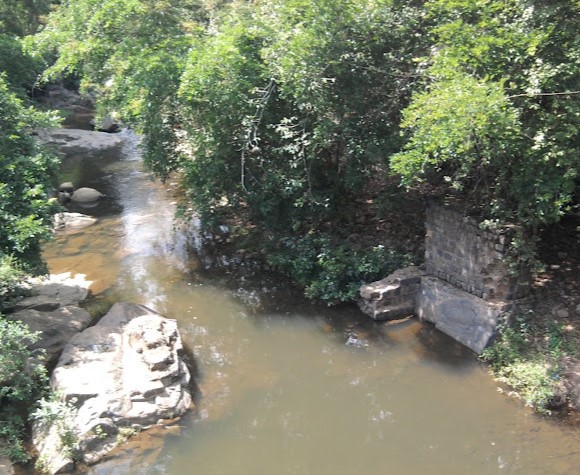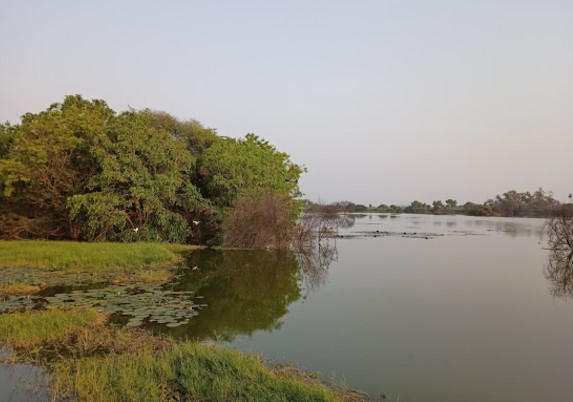Legends Associated with Thirumuruganathaswamy Temple
Lord Murugan and the Surasamharam Legend:
The demon king Soorapadman, after rigorous penance, became arrogant and began torturing and imprisoning the celestial gods (Devars).
The distressed Devars sought Lord Shiva’s help. Shiva sent Lord Murugan, accompanied by an army led by Veerabhahu, to defeat the demon.
In the fierce battle known as Surasamharam, Lord Murugan destroyed Soorapadman and his associates, liberating the Devars.
However, by killing the demon, Lord Murugan incurred the Brahmahathi Dosham (sin of killing a Brahmin). To absolve himself, Murugan installed a Shiva Lingam here and worshipped it, giving the Lingam the name Thirumuruganathaswamy.
Legend states that Murugan left his divine spear (Vel) and his mount peacock outside the temple. Therefore, his idol inside the temple does not feature the Vel or the peacock.
It is believed that the Brahmahathi Dosham left Murugan and took the form of a square stone under a neem tree near the temple.
Saint Sundarar’s Encounter with Lord Shiva:
Saint Sundarar, a celebrated Saivite poet-saint, received valuable gifts from King Cheraman Perumal for his poetic excellence.
As Sundarar traveled near this temple with his gifts, Lord Shiva, desiring to hear his compositions, sent his Boodhaganas (divine attendants) disguised as hunters to rob him of his valuables.
Sundarar prayed to a nearby Vinayakar (Ganesha) for help. Lord Vinayakar directed him to this Shiva temple.
Sundarar sang a pathigam (hymn) in which he blamed Lord Shiva for allowing such an incident in his divine presence. He demanded the immediate return of his valuables, calling the Lord's guardianship into question.
Amused by Sundarar’s poetic lament, Lord Shiva returned the stolen items. This event is commemorated in the temple as the festival Vedupari.
The place where Shiva returned the valuables is marked as Pon Maraithu Vaidha Idam in the temple.
King Cheraman Perumal’s Transformation:
The incident deeply inspired Cheraman Perumal, the king who had honored Sundarar.
Cheraman Perumal later became a revered Shiva devotee and was honored as one of the 63 Nayanmars (Saivite saints).
PURANIC SIGNIFICANCE:
Legends and History
The Battle of Soorasamharam and Brahmahathi Dosham
- The demon king Soorapadman, empowered by a boon from Lord Shiva after intense penance, ruled over 1008 worlds and caused immense suffering to the Devas by attacking heaven and imprisoning them. The Devas, desperate for relief, appealed to Lord Shiva. In response, Shiva sent his son, Lord Murugan, along with a massive army led by Veerabhahu, to annihilate Soorapadman. After a fierce battle, Soorapadman was defeated and killed.
- This event, known as "Soorasamharam," caused Lord Murugan to incur the Brahmahathi Dosham (sin of killing a Brahmin) because Soorapadman was born of a Brahmin lineage. To rid himself of this sin, Lord Murugan installed a Shiva Lingam made of sand at this site and worshipped it. As this Lingam was installed by Lord Murugan, it came to be known as Thirumuruganathaswamy, and the place was named Thirumuruganpoondi.
- It is said that the Brahmahathi dosham, which left Lord Murugan, took the form of a square stone now located under a neem tree near the temple. Interestingly, when Lord Murugan visited this place to worship Lord Shiva, he left his divine spear (Vel) and his mount (peacock) outside the temple. As a result, his idol inside the shrine is depicted without these traditional attributes.
Sundarar's Encounter with Lord Shiva
- Sundarar, a revered Shaivite saint, was traveling through the region after receiving valuable gifts from King Cheraman Perumal for his poetic excellence. Lord Shiva, wishing to hear Sundarar's compositions, sent his Bhoodaganas (divine attendants) disguised as hunters to rob Sundarar of his gifts.
- After the theft, Sundarar prayed to a nearby Vinayakar (Koopidu Vinayakar) for help, who directed him to this temple. Sundarar then rendered a Pathigam (devotional hymn) blaming Lord Shiva for not protecting him and demanding immediate intervention. Delighted by Sundarar's poetry, Lord Shiva returned the stolen gifts. This event is celebrated annually as the Vedupari Utsavam. A specific location in the temple, called Pon Maraithu Vaitha Idam, is believed to be where Lord Shiva stored the stolen treasures.
- At the temple entrance, three sculptures depict this episode: Shiva as a hunter (Veduvan), Sundarar in sorrow after losing his gifts, and Sundarar in joy upon their return.
Pandyan King Blessed with Twins
A Pandyan king named Maharadhan, who was childless, visited the temple, bathed in the holy Shanmuga Theertham, and offered porridge (Payasam) made from its water as nivedhana (offering) to Lord Shiva. He also distributed the porridge among the Brahmins. As a result, he was blessed with twins.
Pancha Thandava Sthalams
Thirumuruganpoondi is considered one of the five Pancha Thandava Sthalams, where Lord Shiva performed the Brahma Thandavam (a cosmic dance) for Sage Durvasa.
Madhavi Vanam
According to legend, Sage Durvasa brought the sacred Madhavi tree (Kurukkathi) from heaven and planted it here. This earned the place the name Madhavi Vanam. In ancient times, it was also referred to as Mullai Vanam and Kandamapuri.
Significant Worship and Visitors
- Lord Murugan worshipped Lord Shiva here for relief from Brahmahathi Dosham.
- Saints like Sage Agastya, Sage Markandeya, and Sage Durvasa worshipped Lord Shiva here.
- Sundarar, a renowned Shaivite saint and one of the 63 Nayanmars, visited the temple and composed hymns.
- Pandyan King Maharadhan received blessings for progeny.
ADMINISTRATION:
The temple is now maintained by the Archaeological Survey of India (ASI) and is declared as a National Heritage Monument.


